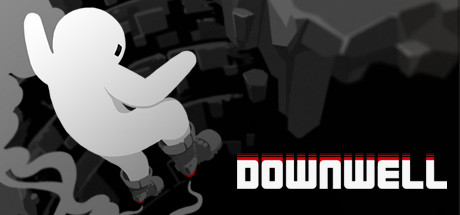by Isaac Smith
This summer, I was fortunate enough to spend a few hours here and there exploring some games I hadn’t played before. Not as many as I’d like, of course!
By and large, I was playing platformers. The lofty platformer is one of my favorite genres, behind sandbox games and RPGs. There have been plenty of really excellent platformers over the years (like, I don’t know, Mario), but the indie scene has just demolished traditions and clichés surrounding a genre which began essentially as a “jump-and-try-not-to-die” obstacle course.
Come to think of it, that actually still describes Mario Maker with a degree of accuracy!
Some are several years old, some are quite new, but I want to be clear about this post: it’s not a list. I don’t do top 10’s. I don’t pretend that my subjective opinion colored by experience is going to any way effect the ranking you’d put these games in, so I’m not going to rank them. I’m merely going to say to you, dear reader: if you haven’t played these, you might want to pick them up the next time they’re on sale. If you’re looking for some games to chew through this summer, these are the ones you ought to play first.
140
This game is a minimalist rhythm-based puzzle-platformer (good heavens, how genre-specific can you get?). You’re a primary shape, going through a world made of other primary shapes. The world begins starkly, but quickly gains a level of pastel color that borders on eye-vomit. It shines, it shimmers, and it changes within a level several times as you progress through challenges. Other aspects of the level are added as you progress, as well. A level may begin as a simple jumping challenge, but the platforms you jumped over before may begin moving (or becoming deadly) as you reach checkpoints and increase the world’s complexity.
It sounds complicated, but it’s incredibly intuitive as soon as you start. The levels are crafted excellently and the difficulty curve is rarely anything but perfect. There’s enough variety in the challenges of timing, critical thinking and reflexes that it keeps you on your toes (and makes you feel like you deserve the win when you get it). The boss battles remind me of those in Sword & Sworcery, where you (funnily enough) face off against primary shapes as your foe.
My favorite part about this game, however, is the aspect of it from which it gets its name: everything in the game is on a global timer set to a piece of background music that is 140 beats per minute. Different rhythmic figures govern the movement of different parts of the world, and your proximity to an object changes the volume of that particular part of the beat. It not only adds a Crypt of the Necrodancer style rhythmic prediction challenge, but also creates an ever-changing musical canvas and level design that is immersive, unique and still difficult to master.
It’s not a long game, but I loved it!
Braid
Braid is an older indie game (and it was featured in Indie Game: The Movie), but I didn’t beat it until just recently. I thought that I wouldn’t like the rough feeling of its design, but boy was I wrong. It’s a puzzle platformer whose main concept revolves around being able to manipulate time in different ways.
Braid doesn’t hold your hand. It introduces new concepts through challenging levels or vague flavor text. It’s beautiful, too. The hand-drawn style is an acquired taste, but it continues to feel more and more tangible until you’re lost in it.
And I’ll just say this: the story got me good. Every aspect of this game is artistic in some way, from the music to the writing to the level design, to the very core elements of gameplay. It’s amazing and if you haven’t played through it before, you should! Fight the inevitable frustration of being unable to solve a puzzle and give it a go!
Cave Story +
This is another older game, but it’s definitely stood the (relatively short) test of time that separates great indie games from the merely “good”.
I’m a huge fan of the movement in this game. It feels very weird at first but quickly grows on you. The smoothness and speed at which you can navigate levels if you’re good at maneuvering is an awesome feeling, and one that a lot of platformers ignore in favor of the “let’s give them a level where they die a lot” approach.
The art, which is reminiscent of Bomberman, looks and feels fabulous as well.
I love the story, too. I suppose that’s kind of the point!
You get the picture. As someone who celebrates the retro style of many modern indie games, I thought Cave Story was equal parts a beautiful homage to bygone days, and a touching story of surprising depth. I’m not going to spoil anything from this game, but you absolutely should play it. I did it without a walkthrough and I didn’t regret it.
Axiom Verge
Cave Story was a bit of a Metroidvania style platformer, but Axiom Verge is a full-on Super Metroid love letter. Its art is (on the surface) startlingly similar. The screen-changing animation feels the same. The enemies often look like they could have come from Zebes (the home planet of Metroid’s titular creature), and an equal number of them are as frustratingly murderous as any baddie you’d come across in lower Norfair.
But it goes a lot deeper than Super Metroid ever managed. The number of weapons is staggering, and each has their own use. It builds a beautiful mix of personal preference and strategic necessity that I find delicious to dig into more deeply. There’s also a plot, outside of “The last Metroid is in captivity; the galaxy is at peace (not).” There is a much more real sense of discovery in the game, not only of new environments and abilities, but rather a discovery of the world itself. Every place you go, every note you find, every line of dialogue is meaningful and gives you a more complete picture of a world with a past (and a future). You’re uncertain about the loyalty of your allies, and are even uncertain that you’re on the right side of the battle that is (apparently?) being fought in your midst.
There’s also the element of fear that Metroid didn’t quite get until your fateful encounters with SA-X in Metroid Fusion. Some enemies and environments are downright terrifying. The silence of mass graves or empty prisons can be deafening. The boss fights are often grotesque and macabre. Everything is so atmospheric that you really feel yourself getting lost in an alien world.
I talked about Cave Story’s movement, but Axiom Verge goes many extra miles with the complex movement capabilities of your character. It’s the reason I’ve decided not to speedrun the game (although there are some crazies out there who’ve taken it upon themselves to do so). The flow of movement through levels and across obstacles can be so excellently executed it defies imagination. It’s gorgeous to watch and has a tremendous skill ceiling.
I’m sure plenty of people have leaped beyond the obvious comparison of Metroid to Axiom Verge, but since I played Cave Story in such close proximity to it, I think the differences between them really sharpen each games individual strengths and foibles. Cave Story is just that: a story. It is narrative, heroic, fast-paced, powerful and beautiful.
Axiom Verge is an opaque, lumbering titan. It is an epic poem. It tells the story of something else through the story you’re currently playing through, suggesting and hinting at things that will never be openly stated. It is a sprawling adventure that is not so much told as felt.
It is more complex in every way than Cave Story, but I don’t want to say that like it’s an objectively good thing. I loved the heck out of them both, and had as many problems with one’s simplicity as I did with the other’s complexity. They are both worth your time in their own right.
Bonus: Downwell
Downwell is a relatively recent “platformer” created by the makers of Enter The Gungeon. You’re falling down a well, and your only protection from enemies conveniently located below you is your trusty pair of bullet-emitting rocket boots. It is super intuitive, fast-paced, and extremely challenging. I haven’t beaten yet and it’s only in this post because I started playing it after I started writing (but before I finished, obviously). If you’ve got a couple of bucks and don’t mind hard games, I am currently enjoying the heck out of it.
It’s nice that the genre isn’t dead. It’s not the new kid on the block, and not every single studio is currently making one *coughRoguelikescough*. But great developers have consistently been innovating new ways to make “jump-and-try-not-to-die” into a meaningful, engaging, awesome experience. It’s a good day to be a gamer.
~Isaac





